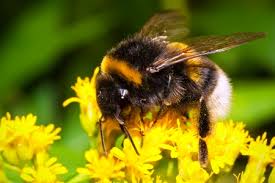US Fish & Wildlife Services
5275 Leesburg Pike,
Falls Church, VA 22041-3803
Introduction
Franklin’s Bumblebee is rare and largely unstudied. Its distribution is limited and within this range it has been recorded at low numbers. This species has not been seen in the wild since 2006 and attempts to study Bombus franklini within its range have been unsuccessful up through 2017. Although rare, such absence indicates that the species is struggling and merits protection.

Franklin's Bumblebee - Species May Be Extinct In Washington and Oregon
Comments
1) Section 4 of the Endangered Species Act requires species to be listed as endangered or threatened solely on the basis of their biological status and threats to their existence, of which inadequacy of existing protections and natural and man made factors are listed as reasons for legal protection. Bombus franklini’s small population size makes it less resilient to threats such as pesticide use and parasitism which plague other species within the genus Bombus. Species such as the Rusty Patched Bumblebee are listed as endangered despite being much more common and widely distributed than Franklin’s Bumblebee. Due to Bombus franklini’s relative susceptibility to extinction, it is advisable that swift legal protection be in place.
2) The USEPA’s Policy to Mitigate the Acute Risk to Bees from Pesticide Products proposes that local pollinator protection plans should be developed. The proposed determination under 81FR7425 that it would not be prudent to designate a critical habitat area appears to be inconsistent with the USEPA's guidance for local pollinator protection plans. Therefore, based on that information, I would like to suggest that you consider designating a critical habitat area for this species according to 50CFR424.12(a)(1) and request that local oversight agencies implement a local pollinator protection plan, at least on a trial basis (for a time frame to be determined, possibly up to 50 years (?) or until such time as there is adequate certainty regarding whether the species is extinct).
3) Habitat loss is noted to not be a factor in population decline, However according to the US Forest service, expanding agriculture throughout Bombus franklini’s range has caused extensive habitat degradation and destruction. Non-native and invasive plants that have been introduced to northern California and southern Oregon can out compete the plants that Franklin’s bumble bee relies upon for food. Though Franklin’s Bumblebee is a generalist forager, it may still benefit from the establishment of a critical habitat due to a small range and population size. I propose a reconsideration of providing a critical habitat for Bombus franklini.
Please direct all responses to these comments to the following email address: This email address is being protected from spambots. You need JavaScript enabled to view it.
Sincerely,
Matthew Coughlin (Associate in Maryland)
Environmental Reviewer
Environmental Review Inc.
1792 Rogers Avenue
San Jose, California 95112